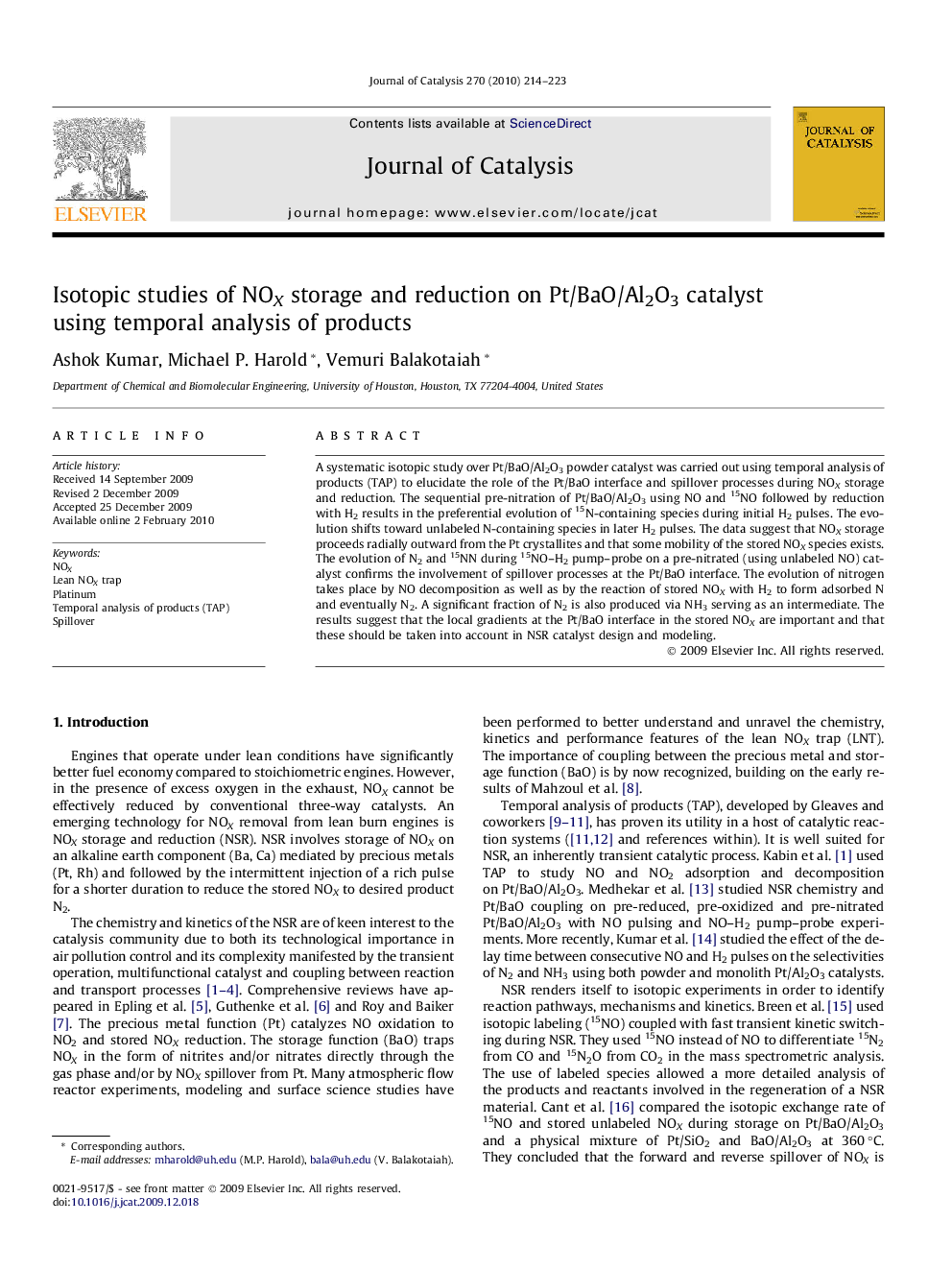| Article ID | Journal | Published Year | Pages | File Type |
|---|---|---|---|---|
| 61890 | Journal of Catalysis | 2010 | 10 Pages |
A systematic isotopic study over Pt/BaO/Al2O3 powder catalyst was carried out using temporal analysis of products (TAP) to elucidate the role of the Pt/BaO interface and spillover processes during NOX storage and reduction. The sequential pre-nitration of Pt/BaO/Al2O3 using NO and 15NO followed by reduction with H2 results in the preferential evolution of 15N-containing species during initial H2 pulses. The evolution shifts toward unlabeled N-containing species in later H2 pulses. The data suggest that NOX storage proceeds radially outward from the Pt crystallites and that some mobility of the stored NOX species exists. The evolution of N2 and 15NN during 15NO–H2 pump–probe on a pre-nitrated (using unlabeled NO) catalyst confirms the involvement of spillover processes at the Pt/BaO interface. The evolution of nitrogen takes place by NO decomposition as well as by the reaction of stored NOX with H2 to form adsorbed N and eventually N2. A significant fraction of N2 is also produced via NH3 serving as an intermediate. The results suggest that the local gradients at the Pt/BaO interface in the stored NOX are important and that these should be taken into account in NSR catalyst design and modeling.
Graphical abstractNOX storage and reduction–oxidation on Pt/BaO/Al2O3 involves the close coupling between the precious metal and storage components. The use of labeled nitric oxide, 15NO, provides direct evidence for spatial gradients in the storage phase and the possibility that the regeneration can be limited by the supply of stored NOX to the Pt.Figure optionsDownload full-size imageDownload high-quality image (71 K)Download as PowerPoint slide
